Illusion in photographs. Why did Khomeini win?
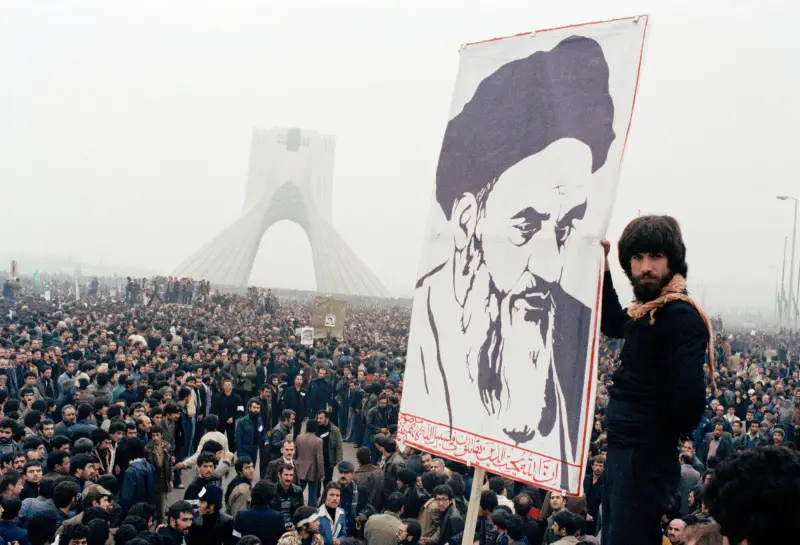
A little fantasy
Undoubtedly, many readers have seen collages online depicting in contrast scenes from life in Iran under the last Shah and the Grand Ayatollah, with the indispensable refrain: it was - it was.
This kind of comparison reminds me of the plot of a science fiction novel: photography is invented at the beginning of the XNUMXth century in Paris. And there the photographer learns about a new city built in an unknown Russia. He had only heard about it: bears, snowdrifts, schismatics; but he grabs a tripod under his arm and hurries to St. Petersburg, where he films assemblies, cobbled streets, naval parades, etc.
Only in the district towns, villages and estates that have not yet outlived the patriarchal way of life - not even a foot: it’s far away, it’s expensive, they’ll probably rob you on the way, and even these were carried away by the rains.
Accordingly, the question is: could a photographer, looking at Europeanized St. Petersburg and its Parisian-like inhabitants, and looking at the uniforms of Semyonovtsy and Preobrazhentsy, form an adequate idea of Russia? The question is rhetorical.
Likewise, photographs of Iran under the Shah and the Grand Ayatollah should not form an idea of almost total Westernization of the country, forcibly dragged by the ulema into the Middle Ages, with a burqa and a beard.
Such views indicate both a vague understanding of the driving mechanisms of the Islamic Revolution and the world of the Middle Ages, including the Persian one.
For example, in his late period, the versatile educated monarch, talented writer, commander and administrator Shah Ismail I challenged the Sublime Porte for the status of the leading Middle Eastern power. And their war was reminiscent of the confrontation between the two great empires of late Antiquity - the Eastern Roman and Persian.
And even if the process of Westernization of Iran had been comprehensive, the Islamic Revolution would not have won. Its slogans and ideas would not have gained support among broad sections of the population and would not have been reflected in the name of the Iran-Iraq War “Sacred Defense”, as well as in the exploits of young martyrs.
What were the driving forces of the protest wave, on the crest of which the great and rarely smiling Ayatollah came to power?
The other side of the “White Revolution”
In 1963, the Shah began a program of change known as the White Revolution. Its implementation was not without success, although it was half-hearted.
As in the vastness of the empire reformed by Peter I from the kingdom, so in Iran, born from Persia, modernization affected a small part of society. Namely: the aristocracy, the big bourgeoisie and a certain percentage of the middle class. That is, those who could afford a camera, a car, a holiday at the ski resort in Dizin and other benefits due to the scientific and technological achievements of the Anglo-Saxon civilization, while at the same time accepting the lifestyle characteristic of it.
Were there many of these? Not to say:
The base of the pyramid was peasants, the majority of townspeople, mainly living in the regions; bazaar traders. They were impressed by the conservative views of the Shiite clergy (I use this term for convenience; in fact, there is no institution of clergy in either the Shiite or Sunni schools of Islam).
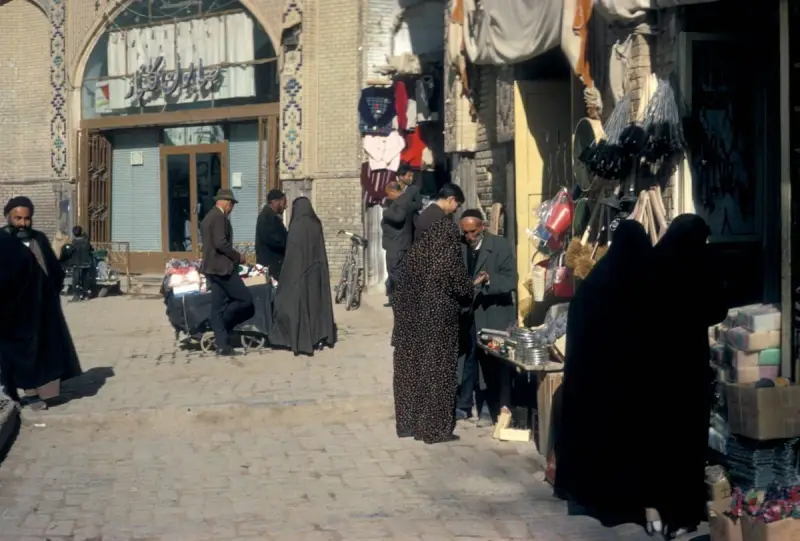
And this is also Tehran at the turn of the 1960s and 1970s. – as you can see, not all of it was Westernized
Of course, one cannot deny the weakening of traditional values based on a religious worldview through the White Revolution. Let's say the size of the middle class doubled in the sixties. The number of students, many of whom sympathized with leftist ideas, also grew.
However, the process of modernization itself was too slow, furthermore aggravated by dissatisfaction with the Shah of the poor part of the Iranians. The grounds for grumbling were very significant, and not only in the eyes of the rural poor, by whom proceeds from the sale of oil passed, ending up in the pockets of the Shah’s family and the depths of the military budget. But okay, the latter, thanks to which the Iranian army has become one of the strongest in the region and has become a weighty argument in Tehran’s Middle East policy.
The Shah often simply squandered the funds that came into the treasury. And he did it publicly. Take the celebration in 1971 of a more than conventional date - the 2500th anniversary of the Persian Empire, which cost the budget a pretty penny and caused outrage even among the world community.
Thus, journalist Ulrike Meinhof wrote an open letter to Shaheen Farah Pahlavi:
That is, there were enough social preconditions for revolution, which were also aggravated by the brutal suppression of any manifestations of discontent by the SAVAK security service.
Zoroastrian Games
And then the monarch, who imagined himself to be the heir of the Achaemenids, began to instill Zoroastrianism, in 1976 replacing the Hijri solar calendar with the imperial one that preceded it. In general, the course towards the de-Islamization of Iran, the cultivation of nationalism in its specific form of devotion first to the Shah, and then only to the Motherland, also did not add to M. Pahlavi’s popularity among the general public.
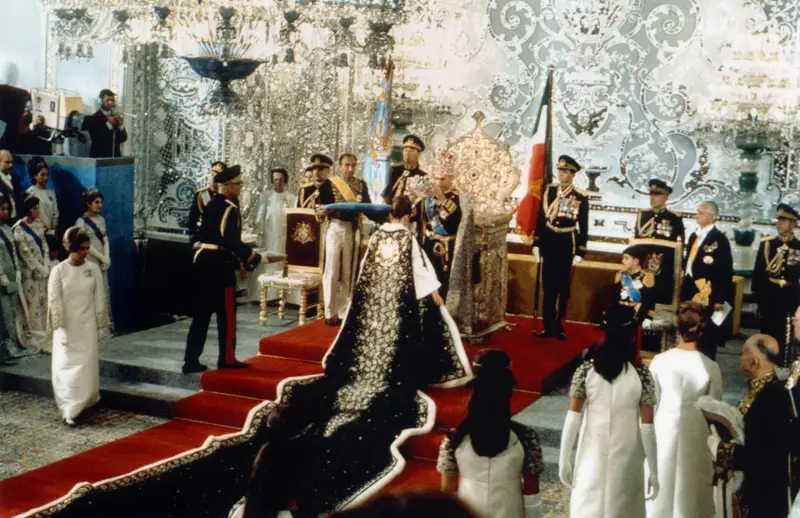
Playing the heirs of the Achaemenids
Moreover, the Iranians loyal to the monarch laughed at the new calendar, just as even the Romans, who were not inclined to sympathize with Christianity, laughed at Julian the Apostate, who decided to turn the wheel stories back and started a pagan renaissance. Originally stillborn.
The same can be said about the Zoroastrian hobbies of M. Pahlavi. They only added grist to the mill of the anti-Shah propaganda of the Shiite clergy and became one of the reasons for the fall of the monarchy.
Did the Shah know, celebrating the anniversary of the empire on a grand scale in tents in the middle of the desert, where Persepolis once stood, that he was destined for the fate of Darius III, and the gravedigger of his power would not be an enlightened disciple of Aristotle, but a stern Ayatollah?
Another thing: there were alternative paths of development after the victory of the revolution.
Under the banner of a fusion of Marxism and Islam
Having mentioned the various sections of society who spoke out for and against the Westernized rule of the Shah, we have not yet named the intelligentsia. Many of its representatives, along with students, sympathized with the radical left organization "Mujahideen of the Iranian People" (MIN).
Its goal is to build a specific Islamic socialism. And at first, OMIN welcomed the Islamic Revolution. But faced with the formation of a theocratic state instead of the Islamic Democratic Republic, it launched an open war with Iran.
The situation of confrontation was aggravated by the impeachment of President A. Banisadr, who sympathized with OMIN, supported by R. Khomeini - in fact, the fighters of the organization helped this man leave the country, otherwise he, who had fallen out of favor with the conservative Shiite clergy, would not have avoided reprisals, like another former associate of the Grand Ayatollah - S Gotbzade.
The Mujahideen are responsible for many terrorist attacks (from the standpoint of the Ominovites themselves, acts of sabotage) against civil servants and officials, including high-ranking ones. The loudest of them is the assassination of President M. Rajai. Tehran responded with merciless counter-terrorism.
However, the situation for him was complicated by the deployment of OMIN units with the permission of S. Hussein on the territory of Iraq. There, on the border with Iran, according to the Arabist V.V. Arsenov, Ominov’s fortified military bases with heavy armored vehicles, artillery, tanks and helicopters.
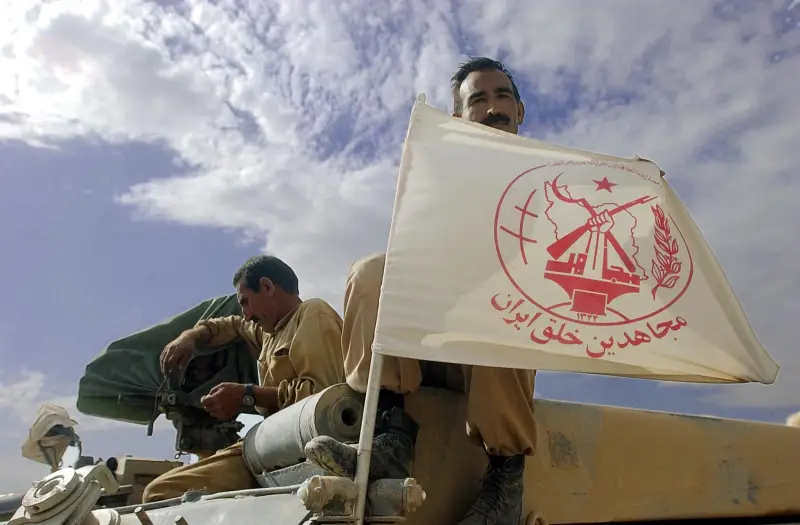
OMIN fighters
In 2003, the Americans took control of them without completely depriving them of their combat potential, confiscating armored vehicles and heavy weapons. But the current activities of OMIN are a different story.
The National Front of Iran is an analogue of Russian cadets
Another political alternative to the purely Islamic character of the anti-Shah revolution was National Front headed by K. Sanjabi. This, you know, is a kind of Iranian analogue of Miliukov’s Constitutional Democratic Party, which arose in the wake of the first Russian Revolution.
The National Front held rather moderate views regarding the form of government of Iran, advocating a constitutional monarchy and not so much demanding the overthrow of the Shah as calling on him to follow the path of development of democracy.
In response, M. Pahlavi took half-hearted measures.
On the one hand, SAVAK brutally suppressed the protests that broke out in 1978, when members of the National Front also fell under the flywheel of repression, on the other hand, it invited one of its leaders, along with K. Sanjabi, Sh. Bakhtiar, to the post of prime minister.
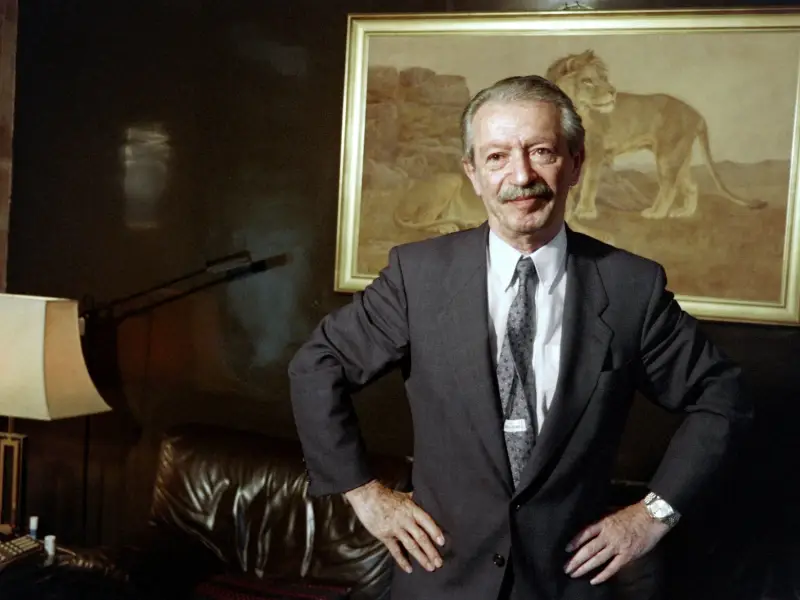
Shapur Bakhtiar
He agreed, becoming the last head of the Shah's government, but was unable to cope with the revolutionary wave, within which the undisputed leadership of R. Khomeini very quickly emerged. By the way, doesn’t the parallels remind you: V.I. Lenin - R. Khomeini, Sh. Bakhtiyar - P.N. Milyukov, who sat in the ministerial chair for a little over a month?
In addition, Sh. Bakhtiyar’s very decision to cooperate with the Shah led to a split in the National Front. After the victory of the Islamic Revolution, the leadership of the Iranian cadets quickly became convinced, like the Ominovites, of the clerical nature of the emerging government, with no prospects for carrying out broad democratic reforms, albeit under the auspices of Islam.
In 1981, after an attempt to organize a protest march in connection with the adoption by the Mejlis of an act of retaliation authorizing blood feud, the National Front was defeated as an organized political force.
The sad fate of Tude
Finally, Tudeh party, standing on communist positions. It was not numerous, at least in comparison with OMIN, and moreover, like the Mujahideen, it experienced a split: during the Soviet-Chinese conflict, part of the Maoists separated from it.
The communists initially supported the Islamic Revolution, they even managed to incorporate part of the officer corps into their ranks. They also approved the seizure of the American embassy and the suppression of the liberal opposition.
The calculations of the Tudeh leaders, led by its first secretary N. Kiyanuri, were based on the hope of Tehran's commitment to a pro-Soviet course in foreign policy.
This did not happen, and following the National Front the party was banned. N. Kiyanuri was arrested, tortured, sentenced to execution, replacing it with a long term of imprisonment - in this regard, he was luckier than many of his executed comrades. Since the mid-1980s, the Tudeh has ceased to exist in Iran as an organized political force.
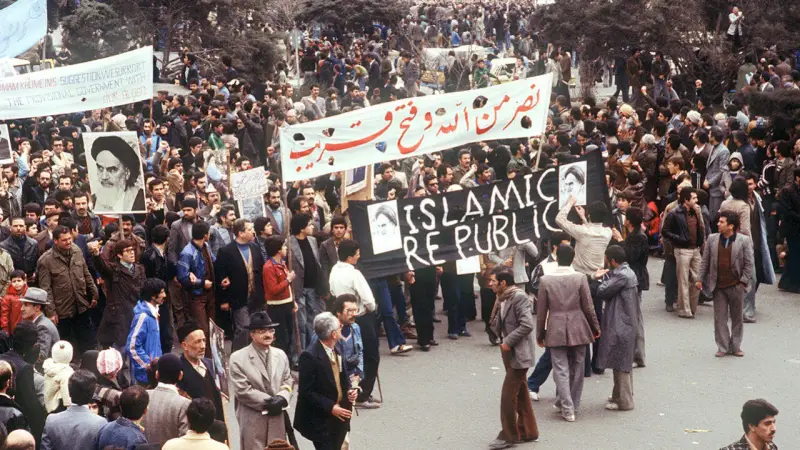
Here, the Shiite clergy and the spectrum of secular political forces are still side by side
Of course, the organizations listed above are not the only ones that opposed the Shah and initially supported the revolution, but later did not find a common language with R. Khomeini and were destroyed. But they are the largest and posed a danger to the Grand Ayatollah, especially YOMIN. And today it is the leading opposition structure of the current Iranian government.
The personality factor as a component of the victory of the Islamic Revolution
All Iranian political forces that opposed the dictatorship of R. Khomeini faced one significant problem: the lack of a sufficient social base, which, as mentioned above, the ulema had.
But the main thing: in Iran, as in few places, the personality factor of the Great Ayatollah was felt, attractive, including for his opponents, such as N. Kiyanuri, Sh. Bakhtiyar and K. Sandzhak.
All of them, educated, and the last two were somewhat refined intellectuals, did not enjoy popularity among the masses comparable to the authority of R. Khomeini.
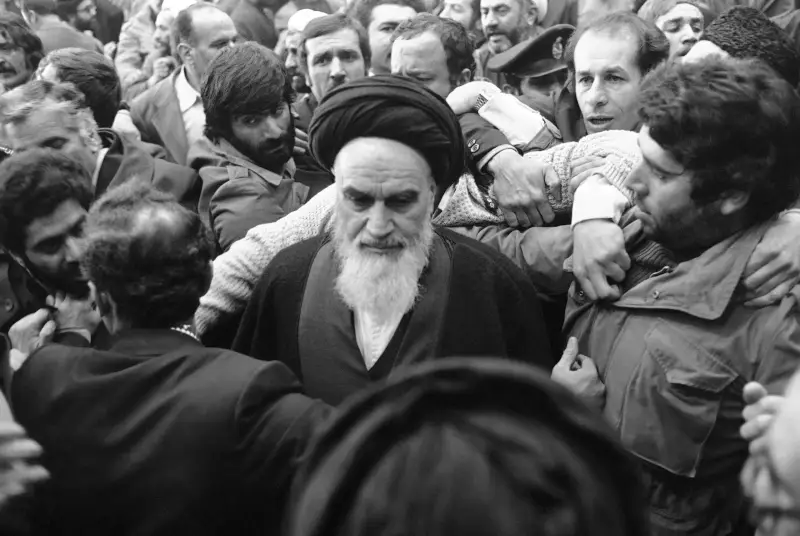
The latter was not even popular, but fanatical veneration, as evidenced by his funeral with eerie scenes staged by an exalted mourning crowd.
R. Khomeini is gone, but his work lives on - for how long?
However, the emotional upsurge cannot last long. The Grand Ayatollah has long been in another world, and his followers do not have comparable authority.
Yes, the Islamic Republic survived the sanctions, but, say, W. Churchill kept the British ship afloat in extremely difficult conditions, taking it along the path of blood, sweat and tears promised in 1940. But his tired compatriots did not allow him to enjoy his triumph in 1945.
And will today's Iranians, in conditions of economic, military and intellectual renaissance, want to see their republic continue to be Islamic?
Epilogue or requiem for Mossadegh
And, yes, completely at the end and at the same time, perhaps, anticipating the topic of a future conversation: I believe that Iran would have avoided revolutionary upheavals and the Shah’s eccentricities if the founder of the National Front, M. Mossadegh, had brought his reforms to the end, and not gone to a prison cell after being initiated by the British and Americans coup.
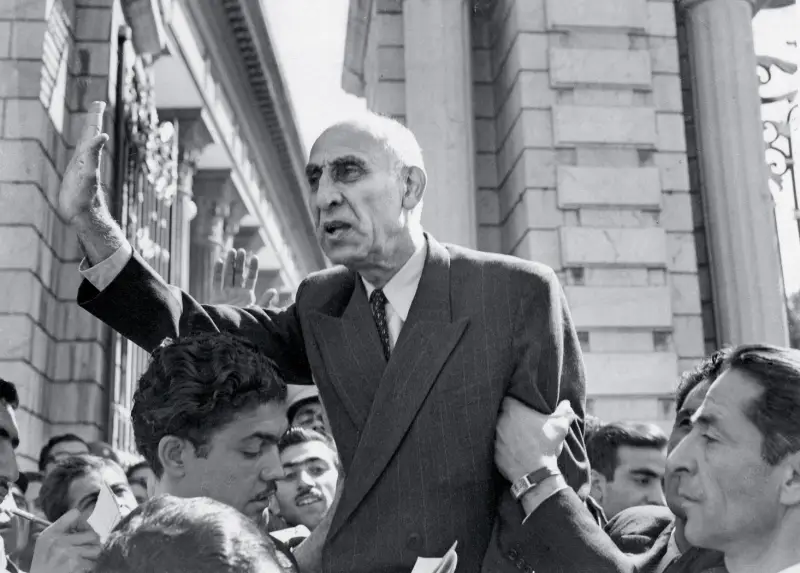
M. Mossadegh – the failed future of Iran
He did not share the tragic fate of another outstanding reformer, the Afghan leader M. Daoud, but he also did not try on Ataturk’s laurels. Although I could. For, had M. Mossadegh remained in power, today’s Turkey, with its ambitions exceeding its potential, would have been a pale shadow of Iran.
Использованная литература:
Abalyan A. I. Iran-Iraq armed conflict of 1980–1988 and its impact on the system of international relations in the Middle East
Aliev A. A. “National” and “religious” in the system of interstate relations between Iran and Iraq in the XNUMXth century
Arsenov V.V. Islamic Republic of Iran and the Organization of the Mujahideen of the Iranian People
Boev E. B. Ideological foundations of the White Revolution in the works of Mohammed Reza Shah Pahlavi
Shuvalova N. B. Islamic revolution in Iran: prerequisites, features, prospects
Imakov T.Z., Semedov S.A. Khomeinism - the ideology of political Islam
An open letter to Farah Dib
Information